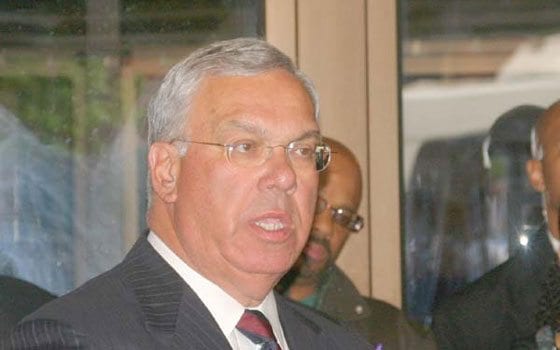
“When you look at the economy, and financial aid is tightening over these last seven years, I think it’s reasonable to say [that the] economy factored in in a major way,” said Turner.
But it’s not all dollars and cents, according to Greg Johnson — difficulties in preparing BPS students for the college experience also play a role.
“It’s clear [that] a lot of kids coming from BPS are not ready for college work in the traditional sense,” said Johnson, executive director of Bottom Line, a Jamaica Plain nonprofit that works to help Boston students succeed in college.
One problem, he said, is that many Boston students do not have as robust a support network as those in other public school systems, which can put them at a disadvantage from the start.
“The first challenge most kids have is that they put a lousy list of colleges together,” said Johnson. “They don’t have a clear idea where they should be going.”
Johnson stressed the importance of guidance in putting students on the right path.
“A lot has to happen before kids get on the ground on campus — it’s not just about getting accepted,” he added. For many students, “parents aren’t knowledgeable about the process, or aren’t available.”
State officials say they want to find ways to provide more support for students working to get into college.
“We want to promote a culture of college-going in all our public schools,” said Jonathan Palumbo, a spokesman for the state Executive Office of Education. “College is for everyone.”
Palumbo stressed a variety of initiatives designed to help students not only in Boston, but also across the state, including the development of a “college and career Web portal” to serve as a clearinghouse of information about the college application process, financial aid data and individual accounts to help students keep track of the many different documents necessary for their applications.
The site is not yet operational, but Palumbo said it will be “one-stop shopping for students to help them get organized about getting into college.”
Another focal point, according to Palumbo: Increasing collaboration among the state departments of elementary, secondary and higher education, especially in curriculum creation and managing expectations, to ensure that students are better prepared for college-level coursework.
Improving the quality of early childhood education is also a factor, as is Gov. Deval Patrick’s desire to make Massachusetts community colleges free to all students.
Patrick announced that goal as part of a sweeping collection of education policy changes proposed last summer, before the economy began its descent into a recession. But Palumbo said the plan, or a version of it, remains on the table.
“We are looking at a policy change that would make community college free for all students in the Commonwealth,” he said. “We’re working very, very hard to make next academic year free for people who want to study early childhood education — and those students who are themselves parents of low-income students.”
One area in which both the PIC/Northeastern and Boston Foundation reports sounded an alarm was the persistence of racial and economic gaps in students’ performance.
The PIC/Northeastern report also revealed continued disparities in graduation rates, finding that black and Hispanic students were far less likely to graduate college than their white and Asian counterparts. Black and Hispanic males had the lowest graduation rates, with 24 percent and 19 percent earning degrees, respectively. The report did not suggest explanations for the disparities.
“The ultimate measure of Boston’s success — on its own terms and as a model for the nation — will be in breaking the stubborn link between socioeconomic status and educational attainment,” Grogan wrote in the Boston Foundation report.
City Councilor-at-Large John Connolly, a former public school teacher who has taught in both Boston and New York, said the reports “show that the achievement gap is getting worse overall.”
“It strikes me some of this is a matter of will and not funding. Do we have the will to bring universal after-school, extended learning time and year-round learning?” said Connolly. “We need to eradicate these disparities. We need to give every skill we can to every child.”






